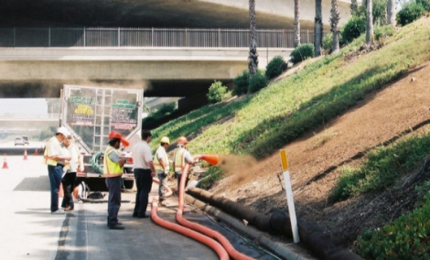
California has approximately 196,000 miles of roads by length. Caltrans alone annually manages over 50,000 miles of California’s highway and freeway lanes and maintains approximately 25,000 acres of landscaping. Compost and mulch applied to land adjacent to roadways improve aesthetics, control erosion, and manage stormwater. The Caltrans Erosion Control Toolbox provides standards and guidance to its staff and contractors on the use of compost and mulch to design effective and cost-efficient erosion control treatments. Many local road departments throughout California adopt and use Caltrans standards and guidance on the use of compost and mulch for design and maintenance of lands adjacent to its roads.
The following systems/treatments use compost and mulch along California’s streets and roads network:
Resources
- Caltrans Erosion Control Toolbox
- 2019 Caltrans State Highway Management Plan
- Caltrans Compost FAQs
- Presentation: Two Years of Observations of Compost Use
- Innovative use of compost by state highway departments across the United States
- Use of compost to stabilize steep slopes and prevent erosion and sediment control
- Caltrans 2019 Erosion Control Manual
- Caltrans Construction Sites Details and Drawings
- Caltrans Case Study: Improving Roadside Vegetation with Compost Treatment Highway 267, Brockway Summit, Placer County
Resources
For more information contact: Organic Materials, organics@calrecycle.ca.gov

